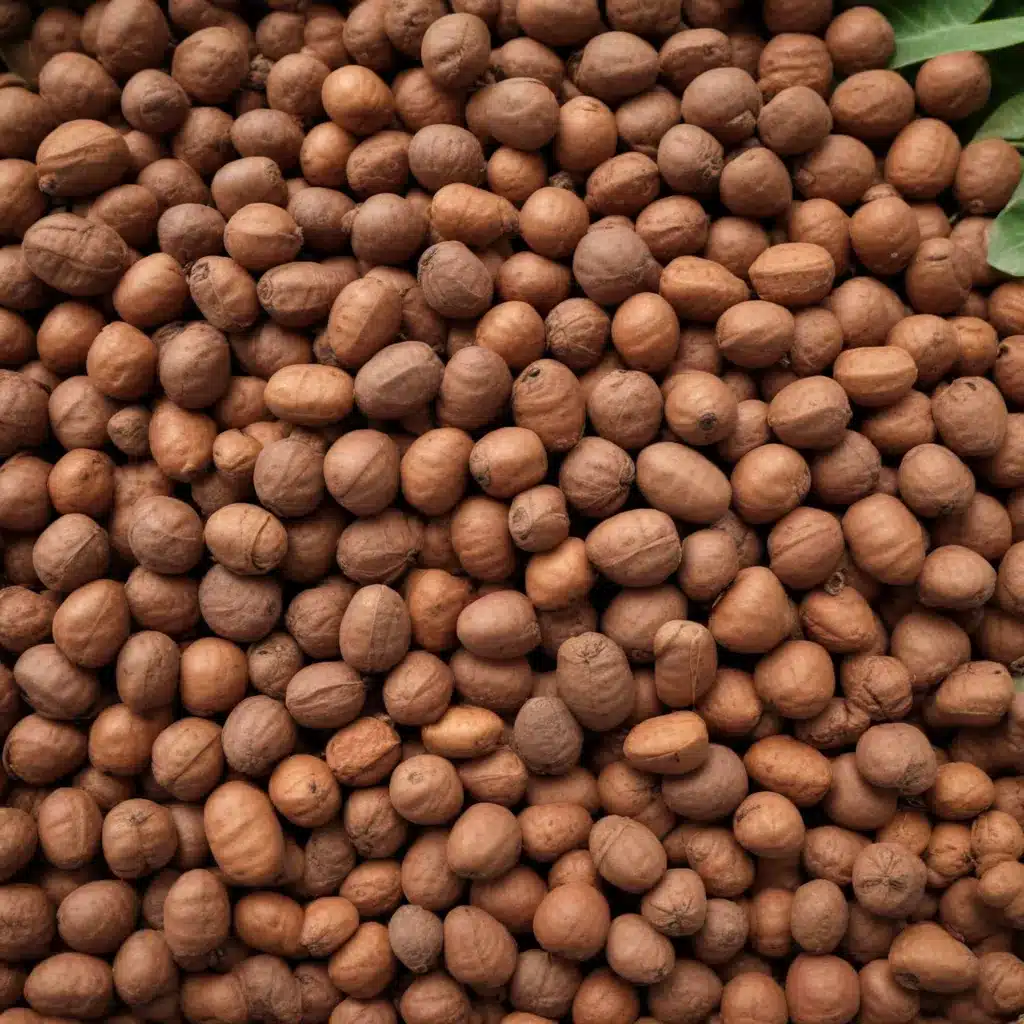
Allspice: The Fragrant Tropical Spice
The Pimenta dioica plant, commonly known as allspice, is a captivating evergreen tree native to the lush Caribbean region. Its enchanting leaves and aromatic berries have long been prized for their diverse culinary and medicinal applications, making allspice a true tropical treasure.
Botanical Characteristics
The Pimenta dioica plant is an evergreen tree that can reach heights of up to 50 feet (15 meters) in its natural habitat. Its lush, deep-green leaves are oblong in shape and emit a warm, fragrant aroma when crushed or bruised. The tree produces small, white flowers that eventually develop into dark-purple berries, which are the source of the renowned allspice spice.
Culinary Applications
Allspice’s versatility in the kitchen is unparalleled. The dried and ground berries are a staple ingredient in baking and confections, lending a unique blend of warm, sweet, and slightly pungent notes to cookies, cakes, and pies. In savory dishes, allspice adds depth and complexity to marinades, rubs, and sauces, often pairing beautifully with meats, vegetables, and legumes. Allspice is also a key component in various beverages, including mulled wines, ciders, and traditional Caribbean drinks like the famous Jamaican Red Stripe.
Origins and History
Geographic Distribution
The Pimenta dioica plant is native to the Caribbean region, with its natural range extending from Mexico’s Yucatan Peninsula to the northern regions of South America. The ideal growing conditions for this tropical tree are found in the warm, humid climates of the Caribbean islands, particularly in Jamaica, where allspice has become deeply woven into the island’s culinary and cultural heritage.
Cultural Significance
Allspice has long held a significant place in traditional medicinal practices throughout the Caribbean. The leaves, berries, and essential oil extracted from the plant have been used to treat a variety of ailments, including digestive issues, respiratory problems, and skin conditions. In the realm of cuisine, allspice is a defining ingredient in many iconic Jamaican dishes, such as jerk seasoning, lending its distinctive flavor profile to the island’s rich culinary traditions.
Flavor Profile and Aromatic Chemistry
Unique Flavor Compounds
The captivating flavor of allspice is primarily attributed to its high concentration of the compound eugenol, an essential oil that also contributes to the aroma of cloves. Additionally, the berries contain other aromatic compounds, such as myrcene and chavicol, which blend to create a warm, complex, and slightly pungent flavor profile that evokes a harmonious mix of cinnamon, clove, and nutmeg.
Versatility in Cooking
The versatility of allspice in the kitchen is unparalleled, as its unique flavor profile allows it to complement a wide range of ingredients and cuisines. When used judiciously, allspice can balance acidity, enhance sweetness, and add depth to both sweet and savory dishes. It pairs particularly well with citrus, honey, chocolate, and a variety of meats and vegetables, making it a valuable asset in the arsenal of any seasoned chef or home cook.
Nutritional and Health Benefits
Antioxidant Properties
Allspice is renowned for its rich concentration of polyphenols, a class of antioxidant compounds that can help neutralize harmful free radicals and support overall cellular health. These antioxidant properties have been linked to potential benefits in reducing inflammation, supporting cardiovascular function, and even exhibiting anti-cancer properties in some studies.
Potential Medicinal Applications
In addition to its culinary uses, allspice has a long history of traditional medicinal applications. The essential oil and extracts from the plant have been used to soothe digestive issues, alleviate respiratory problems, and even address skin conditions. While more research is needed to fully understand the extent of allspice’s medicinal potential, its anti-inflammatory and antimicrobial properties show promising avenues for further exploration.
Sustainability and Global Trade
Ecological Considerations
As the demand for allspice continues to grow globally, it is essential to ensure the sustainable cultivation and harvesting of this tropical treasure. Responsible farming practices, such as selective pruning and responsible collection of the berries, are crucial to maintaining the ecological balance of allspice-producing regions. Conservation efforts and research into more efficient cultivation methods can help safeguard the long-term viability of this important spice crop.
Economic Impacts
The allspice industry plays a significant role in the economies of the Caribbean, particularly in countries like Jamaica, where small-scale producers and cooperatives are the backbone of the trade. The global spice market, valued at over $20 billion, provides important income and livelihood opportunities for these local communities, highlighting the need for equitable and sustainable supply chains to support the continued prosperity of the allspice industry.
Culinary Trends and Innovations
Emerging Culinary Applications
As the culinary world continues to embrace the bold flavors of global cuisines, allspice is experiencing a resurgence in popularity. Beyond its traditional uses, innovative chefs and mixologists are exploring novel applications, such as infusing allspice into spirits, creating unique flavor pairings with chocolate and coffee, and incorporating the spice into both savory and sweet dishes to create unexpected and delightful taste experiences.
Modern Culinary Techniques
The versatility of allspice also lends itself to cutting-edge culinary techniques. For instance, the use of sous vide cooking methods can help to extract and concentrate the essential oils in allspice, resulting in more intense and nuanced flavors. Additionally, the encapsulation of allspice’s aromatic compounds can lead to the development of novel flavor enhancers and seasoning blends, expanding the possibilities for this tropical treasure in the modern kitchen.
Whether you’re a seasoned chef or a passionate home cook, the allure of allspice is undeniable. From its rich history to its diverse culinary and health benefits, this fragrant tropical spice continues to captivate and inspire culinarians around the world. As you explore the wonders of allspice, be sure to visit TriCounty Tree Care for more insights and expert guidance on the fascinating world of spices and the plants that produce them.


